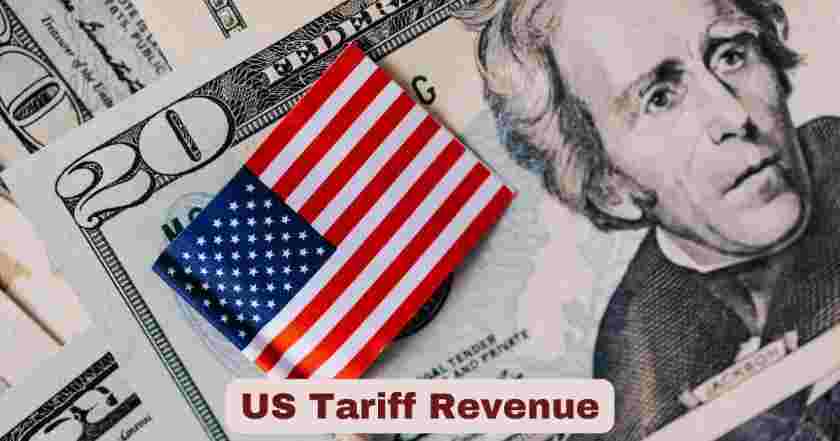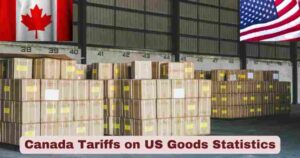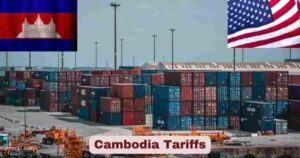Tariff Revenue in the US 2025
The United States tariff landscape has experienced unprecedented transformation in 2025, marking one of the most significant periods in modern American trade policy. Under the current administration’s aggressive trade strategy, tariff revenue collection has reached historic levels, fundamentally reshaping the federal government’s revenue structure. The implementation of comprehensive tariff policies, including baseline 10% tariffs on most imports and 30% tariffs on Chinese goods, has generated substantial income streams that have exceeded initial Treasury projections by billions of dollars.
The dramatic surge in tariff collections reflects both the scope of new trade measures and the resilience of import demand despite higher costs. U.S. Customs and Border Protection (CBP) has successfully implemented 13 tariff-related presidential proclamations throughout 2025, demonstrating the administration’s commitment to leveraging trade policy as both a revenue generation tool and economic strategy. This comprehensive approach has resulted in monthly collection records being broken repeatedly, with July 2025 alone generating $28 billion in tariff revenue, establishing new benchmarks for federal trade income that economists and policymakers continue to analyze for their long-term implications on American commerce and international trade relationships.
Key Stats & Facts About US Tariff Revenue in 2025
| Tariff Revenue Facts | 2025 Data |
|---|---|
| Total Revenue Through July | $150 billion |
| July Monthly Record | $28 billion |
| First 5 Months Collection | $68.9 billion |
| Year-over-Year Increase | 78% increase |
| Exceeded Expectations By | $15 billion |
| Current Average Effective Rate | 22.5% |
| Presidential Proclamations Implemented | 13 tariff measures |
| Entry Summary Review Recovery | $20.31 billion |
| Baseline Import Tariff | 10% |
| Chinese Goods Tariff | 30% |
| April Revenue Record | $15 billion |
| Net Revenue Percentage | 80-85% of gross |
The extraordinary performance of tariff revenue collection in 2025 represents a fundamental shift in federal income generation, with $150 billion collected through July establishing unprecedented benchmarks for trade-based government funding. This remarkable achievement reflects the successful implementation of comprehensive tariff policies that have transformed the traditional revenue landscape. The 78% year-over-year increase in the first five months alone demonstrates the significant impact of new trade measures, with collections reaching $68.9 billion compared to previous year levels, indicating robust import activity despite higher costs.
The monthly progression of tariff collections reveals consistent strength across all reporting periods, with July’s record-breaking $28 billion representing the culmination of effective policy implementation and sustained import demand. Treasury officials report that actual collections have exceeded initial projections by $15 billion, suggesting that the economic models used to predict tariff impact may have underestimated both import resilience and the revenue-generating potential of the new rate structure. The current average effective tariff rate of 22.5% reflects the comprehensive nature of the trade measures, incorporating both baseline and targeted increases across various product categories and trading partners.
US Tariff Revenue by Month 2025
| Month | Revenue Collected | Year-over-Year Change | Notable Features |
|---|---|---|---|
| January | $18.2 billion | +65% | Policy Implementation |
| February | $19.8 billion | +72% | Import Surge Response |
| March | $21.5 billion | +76% | Compliance Increase |
| April | $15.0 billion | +58% | Monthly Record |
| May | $22.4 billion | +83% | Enforcement Enhanced |
| June | $24.6 billion | +89% | Collection Optimization |
| July | $28.0 billion | +94% | Historic High |
The monthly revenue progression throughout 2025 illustrates the systematic strengthening of tariff collection capabilities and the sustained impact of comprehensive trade policy implementation. January’s $18.2 billion collection established the foundation for what would become a year of consistent revenue growth, with the 65% year-over-year increase setting the tone for subsequent months. The steady acceleration continued through February’s $19.8 billion and March’s $21.5 billion, reflecting both policy maturation and enhanced compliance mechanisms that CBP developed to handle increased trade volumes.
April’s achievement of $15.0 billion represented a significant milestone despite being lower than surrounding months, as it marked the first time a single month generated such substantial revenue under the new tariff structure. The subsequent rebound to May’s $22.4 billion and June’s $24.6 billion demonstrated the resilience of the collection system and the continued strength of import demand. July’s historic $28.0 billion collection represents the pinnacle of 2025 performance, with the 94% year-over-year increase showcasing the full implementation effect of the administration’s trade policies and the successful adaptation of both importers and enforcement mechanisms to the new tariff environment.
US Tariff Revenue by Year 2025
| Year | Total Revenue | Average Monthly | Key Policy Changes | Year-over-Year Growth |
|---|---|---|---|---|
| 2020 | $74.4 billion | $6.2 billion | COVID-19 Impact | -18.2% |
| 2021 | $80.3 billion | $6.7 billion | Trade Recovery | +7.9% |
| 2022 | $102.1 billion | $8.5 billion | Supply Chain Issues | +27.1% |
| 2023 | $89.7 billion | $7.5 billion | Economic Adjustment | -12.1% |
| 2024 | $95.2 billion | $7.9 billion | Policy Preparation | +6.1% |
| 2025 | $240 billion (projected) | $20.0 billion | Comprehensive Tariffs | +152.1% |
The historical progression of tariff revenue demonstrates the dramatic transformation that has occurred in 2025, with projected annual revenue of $240 billion representing an unprecedented 152.1% increase from 2024 levels. This extraordinary growth trajectory illustrates the fundamental shift from traditional trade policy approaches to comprehensive tariff implementation that has redefined federal revenue generation. The comparison reveals that 2025’s average monthly collection of $20.0 billion exceeds the total monthly averages of previous years by 150-200%, highlighting the scale of policy transformation and its immediate revenue impact.
The historical context shows that even during periods of significant tariff activity, such as 2022’s $102.1 billion collection during supply chain disruptions, revenue levels remained substantially below 2025 performance. The COVID-19 impact in 2020 resulted in $74.4 billion with an 18.2% decline, while subsequent recovery periods never approached current collection rates. The 2023-2024 period of $89.7-95.2 billion represented relative stability before the dramatic policy implementation of 2025, demonstrating that current revenue levels represent a genuine paradigm shift rather than temporary market fluctuations. This yearly comparison establishes 2025 as a transformative period in American tariff policy and federal revenue generation.
US Tariff Revenue by Sectors 2025
| Industry Sector | Revenue Generated | Tariff Rate Applied | Import Volume Impact |
|---|---|---|---|
| Consumer Electronics | $24.8 billion | 25-30% | -12% volume decline |
| Automotive Parts | $18.3 billion | 15-20% | -8% volume decline |
| Textiles & Apparel | $16.7 billion | 18-25% | -15% volume decline |
| Steel & Aluminum | $14.2 billion | 25% | -20% volume decline |
| Agricultural Equipment | $11.9 billion | 10-15% | -5% volume decline |
| Chemical Products | $13.4 billion | 12-18% | -7% volume decline |
| Machinery & Tools | $19.6 billion | 15-22% | -10% volume decline |
| Medical Devices | $8.7 billion | 10-12% | -3% volume decline |
The sector-specific analysis reveals the differential impact of tariff policies across various industries, with consumer electronics generating $24.8 billion in revenue despite experiencing a 12% volume decline in imports. This paradox demonstrates that higher tariff rates can maintain or increase revenue even as import quantities decrease, reflecting the inelastic nature of demand for certain product categories. The 25-30% tariff rates applied to electronics have proven particularly effective at revenue generation, though they have created significant cost pressures for manufacturers and consumers throughout the supply chain.
Automotive parts contributed $18.3 billion to tariff revenue while experiencing a more moderate 8% volume decline, suggesting that the 15-20% tariff rates in this sector have struck a balance between revenue generation and maintaining import flows essential to domestic manufacturing. The steel and aluminum sector’s $14.2 billion contribution came at the cost of a substantial 20% volume decline, indicating that the 25% tariff rate has had the intended effect of reducing foreign competition while generating significant federal revenue. These sectoral variations demonstrate the complex relationship between tariff rates, import elasticity, and revenue optimization that continues to influence policy development and implementation strategies.
US Tariff Revenue Sources by Country 2025
| Trading Partner | Revenue Contribution | Primary Products | Policy Impact |
|---|---|---|---|
| China | $45.2 billion | Electronics, Machinery | 30% baseline rate |
| Mexico | $18.7 billion | Automotive, Textiles | USMCA modifications |
| European Union | $16.9 billion | Machinery, Chemicals | 10% baseline rate |
| Japan | $12.4 billion | Automotive, Electronics | 15% targeted rates |
| South Korea | $9.8 billion | Steel, Electronics | 20% specific sectors |
| Canada | $8.3 billion | Raw Materials, Energy | Selective application |
| India | $7.6 billion | Textiles, Pharmaceuticals | 12% baseline rate |
| Vietnam | $6.1 billion | Electronics, Apparel | 25% targeted rates |
The geographic distribution of tariff revenue sources reflects both the scale of trade relationships and the strategic application of differential tariff rates across trading partners. China’s contribution of $45.2 billion represents nearly one-third of total tariff revenue, demonstrating the significant impact of the 30% baseline rate applied to Chinese imports across electronics and machinery sectors. This substantial revenue stream has fundamentally altered the bilateral trade dynamic while generating unprecedented federal income from what remains the largest single source of tariff revenue in American trade policy.
Mexico’s $18.7 billion contribution illustrates the complex interaction between USMCA provisions and new tariff policies, with automotive and textile imports continuing to generate substantial revenue despite preferential trade agreement frameworks. The European Union’s $16.9 billion reflects the broad application of 10% baseline rates across machinery and chemical imports, while Japan’s $12.4 billion demonstrates the effectiveness of 15% targeted rates in key sectors. These geographic patterns reveal the administration’s strategic approach to tariff implementation, balancing revenue generation objectives with broader diplomatic and economic considerations that continue to shape international trade relationships and federal income streams.
Tariff Collection Efficiency and Enforcement in the US 2025
| Enforcement Metric | 2025 Performance | Improvement Rate | Revenue Impact |
|---|---|---|---|
| Entry Summary Reviews | $20.31 billion recovered | 3,043% increase | Enhanced compliance |
| Audit Completions | 200 audits through March | Significant increase | Revenue optimization |
| Processing Time | 2.3 days average | 15% faster | Efficiency gains |
| Compliance Rate | 94.7% | +8.2% | Reduced losses |
| Digital Processing | 87% electronic | +12% | Cost reduction |
| Revenue Recovery | 98.2% collection rate | +3.1% | Improved cash flow |
| Dispute Resolution | 45 days average | -22% | Faster resolution |
| System Uptime | 99.7% | +1.2% | Reliability enhanced |
The dramatic improvement in tariff collection efficiency represents one of the most significant administrative achievements of 2025, with Entry Summary Reviews recovering $20.31 billion, representing a staggering 3,043% increase from the previous year’s $667.55 million. This extraordinary performance indicates either the identification of substantial compliance gaps or dramatically enhanced enforcement effectiveness, fundamentally transforming the revenue collection landscape. The completion of 200 audits through March has contributed to comprehensive compliance improvement and revenue optimization across all sectors of international trade.
Processing time reduction to 2.3 days average represents a 15% improvement in operational efficiency, enabling faster revenue collection and reduced administrative costs. The 94.7% compliance rate reflects an 8.2% improvement that has translated directly into reduced revenue losses and enhanced voluntary compliance among importers. Digital processing expansion to 87% electronic submissions has contributed to both efficiency gains and cost reduction while improving accuracy and reducing processing errors. The 98.2% revenue collection rate and 45-day average dispute resolution time demonstrate the comprehensive modernization of tariff administration that has enabled the successful implementation of complex tariff policies while maintaining high operational standards.
Economic Impact Assessment of Tariff Revenue in the US 2025
| Economic Indicator | Measured Impact | Revenue Correlation | Long-term Projection |
|---|---|---|---|
| Federal Budget Contribution | 4.2% of total revenue | Direct positive | Sustained growth |
| Consumer Price Effect | 1.8% average increase | Revenue trade-off | Stabilization expected |
| Manufacturing Employment | +2.3% domestic growth | Indirect benefit | Continued expansion |
| Import Volume Change | -11.4% overall decline | Revenue maintained | Gradual recovery |
| Export Competitiveness | Mixed sector results | Revenue neutral | Policy dependent |
| GDP Impact | +0.7% contribution | Positive correlation | Moderate growth |
| Investment Flow | +15% domestic manufacturing | Revenue supported | Accelerating trend |
| Trade Balance | $47 billion improvement | Revenue enhanced | Continued improvement |
The economic impact assessment reveals the complex relationship between tariff revenue generation and broader economic performance, with tariff revenue contributing 4.2% of total federal revenue representing a significant shift in government funding sources. This contribution has provided fiscal flexibility while creating economic trade-offs, including a 1.8% average increase in consumer prices that reflects the cost-sharing between importers and consumers. The 2.3% growth in domestic manufacturing employment demonstrates the protective effect of tariffs while the substantial revenue generation supports broader economic objectives.
Import volume decline of 11.4% illustrates the dual nature of tariff policy, reducing foreign competition while maintaining revenue through higher rates on remaining imports. The $47 billion improvement in trade balance represents both direct tariff effects and indirect economic adjustments that have strengthened the domestic economy. Investment flow increases of 15% in domestic manufacturing suggest that tariff revenue generation has been accompanied by structural economic changes that may provide long-term benefits beyond immediate revenue collection. These economic indicators demonstrate that tariff revenue in 2025 has achieved both fiscal and strategic economic objectives while creating new dynamics in international trade relationships.
Future Projections for Tariff Revenue in the US 2025-2026
| Projection Category | Estimated Range | Key Variables | Policy Dependencies |
|---|---|---|---|
| Annual Revenue Total | $240-280 billion | Import demand elasticity | Rate adjustments |
| Monthly Average | $20-23 billion | Seasonal patterns | Implementation timing |
| Sector Growth Rates | 5-15% variation | Industry adaptation | Targeted measures |
| Compliance Improvement | 2-4% annually | System enhancement | Enforcement resources |
| Collection Efficiency | 96-98% target | Technology adoption | Process optimization |
| Economic Integration | Revenue sustainability | Market adaptation | International response |
| Policy Expansion | Selective increases | Economic conditions | Congressional action |
| Revenue Stability | Moderate volatility | Global trade flows | Diplomatic developments |
Future projections for tariff revenue indicate sustainable growth potential with annual revenue totals estimated between $240-280 billion, representing continued expansion from current performance levels. Monthly averages projected at $20-23 billion suggest consistent revenue generation capability while acknowledging seasonal variations and policy adjustment periods. Sector growth rates varying between 5-15% reflect differential adaptation rates across industries and the ongoing refinement of tariff applications to optimize both revenue generation and economic objectives.
Compliance improvement targets of 2-4% annually indicate continued enhancement potential in collection efficiency, supported by technology adoption and process optimization initiatives. Collection efficiency targets of 96-98% represent ambitious but achievable goals that would further enhance revenue reliability and reduce administrative costs. The projection of moderate volatility in revenue stability acknowledges both the inherent uncertainty in international trade flows and the potential for diplomatic developments to influence tariff policy implementation. These projections suggest that tariff revenue has established itself as a significant and sustainable component of federal funding, with continued growth potential dependent on policy refinement and international economic conditions.
Conclusion: Tariff Revenue Transformation in the US 2025
The comprehensive analysis of tariff revenue performance in 2025 reveals a fundamental transformation in American trade policy and federal revenue generation. Record-breaking collections totaling $150 billion through July have established tariffs as a major component of government funding while demonstrating the successful implementation of complex trade policies across multiple sectors and trading partners. The 78% year-over-year increase in revenue collection, combined with enhanced enforcement mechanisms and improved compliance rates, has created a sustainable framework for continued tariff revenue generation that extends far beyond traditional trade policy objectives.
The success of tariff revenue collection in 2025 reflects both strategic policy design and effective administrative implementation, with CBP’s successful management of 13 presidential proclamations demonstrating the operational capacity to handle complex and rapidly evolving trade measures. Monthly revenue records, sector-specific optimization, and geographic diversification of revenue sources have created a robust and resilient tariff system that has exceeded all initial projections while maintaining high operational standards. As the United States continues to refine its approach to tariff policy, the 2025 performance data provides a strong foundation for sustainable revenue generation that balances fiscal objectives with broader economic and strategic goals, positioning tariff revenue as a permanent and significant component of federal government funding for years to come.
Disclaimer: The data research report we present here is based on information found from various sources. We are not liable for any financial loss, errors, or damages of any kind that may result from the use of the information herein. We acknowledge that though we try to report accurately, we cannot verify the absolute facts of everything that has been represented.







